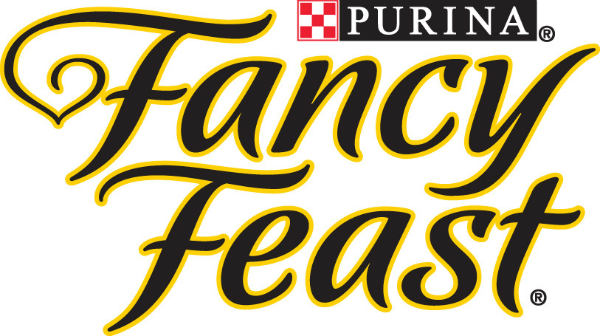This post may contain affiliate links. We are compensated for referring customers to our affiliate partners.
Fancy Feast is one of the most popular cat food brands on the market today. As such, it is readily available in many grocery stores, pet food stores, and is also available online.
Fancy Feast is owned by Nestle Purina PetCare. They introduced the Fancy Feast brand name in 1982 and only had 7 flavors of wet cat food initially. The brand name was introduced as their “gourmet line” of cat foods.
Nestle Purina PetCare has been the subject of several pet food recalls over the past several years. Be sure to frequently check the FDA pet food recalls website. You might want to sign up for their email alerts as well.
Ingredients in Fancy Feast Steamed Wild Alaskan Salmon Appetizer Wet Cat Food
Salmon, water, xanthan gum, guar gum, sodium nitrite.
Top 5 Ingredients Analysis
Salmon
Salmon is an excellent source of high quality proteins for cats and is extremely rich in healthy Omega 3 and Omega 6 fatty acids. Some people worry about mercury levels in fish. It’s true that all fish contains some degree of mercury, the level in salmon is much lower than other types of fish and the FDA doesn’t believe it is cause for concern. Most salmon in cat food is farmed salmon, but higher end cat food (especially those labeled “natural”) can often times be fished from natural lakes and streams. The biggest problem with fish ingredients, including salmon, is if the fish includes an antioxidant called ethoxyquin (EMQ). It is believe that ethoxyquin could be very harmful to cats and other animals. Always make sure you are using “Ethoxyquin free” cat food blends when they include fish ingredients. When in doubt, call the customer service number and ask.
Water
As you might expect, water is mostly added for moisture and cooking purposes. It does not add any nutritional value to the food.
Xanthan gum
This is a substance produced by bacterial fermentation or created synthetically and is used in cat foods as a gelling agent and thickener. It is composed of glucose, mannose, and glucuronic acid. It is what causes the black rot on veggies that have been in the fridge too long. Once the bacteria has fermented, it is pasteurized (killed) and filtered. The resulting xanthan gum is then treated with isopropyl alcohol, dried, ground, and diluted to desired consistency. The finished product is a loose, whitish-colored powder. The behavior of xanthan gum makes it ideal for food processing purposes and is used in human food frequently. Nutritionally speaking, it is a carbohydrate with about seven grams of fiber per tablespoon. Xanthan gum is made using carbohydrates from corn, wheat, dairy, or soy which are all common food allergens for many cats.
Guar gum
This ingredient is also sometimes called guaran. It is primarily the ground endosperm of guar beans. The guar seeds are dehusked, milled and screened to obtain the guar gum. It is typically produced as a free-flowing, off-white powder. This ingredient is mostly used to thicken the food and give it more texture. It is an FDA-approved, all natural GRAS (Generally Recognized as Safe) ingredient used by the food and cosmetic industries. It also is used to improve the shelf life of the food and helps lower the glycemic index of food. Many cat food companies claim this ingredient also aids in digestion and weight loss. There is some minor debate about the benefits of this ingredient with some claiming negative impacts, but in general, this is thought to be a relatively non-nutritious yet safe ingredient.
Sodium nitrate
Nitrates are used in curing, which is a broad category of techniques for preserving foods, mainly meat and fish, that involves the use of salt, sugar, or some form of dehydration. In each case, the goal is to make the food unattractive to the bacteria that cause food spoilage. This works because bacteria are tiny organisms that require, among other things, moisture, oxygen and food. Take away one of these things and they die. So basically, that’s a fancy way of saying this ingredient is used as a preservative. In addition, it also gives cat food that red, meaty look. While unsubstantiated, there are claims that sodium nitrite and sodium nitrate can cause chemically induced cancer in cats. In rare circumstances, pets have died due to to receiving too much of this ingredient in their food.
Will your cat suffer from allergic reactions as a result of feeding on steamed wild salmon appetizer?
Though this formula doesn’t contain any of the major allergens that affect cats, it leaves a lot to be desired. It contains a controversial ingredient (sodium nitrate) making it a no-go for cats that are overly sensitive to food allergies or digestion issues. Overall, we think the risk of food allergies associated with this cat food is relatively low, but there inclusion of sodium nitrate does raise some minor concerns.
Conclusion
We are pleased to see yet another limited ingredient cat food in this Fancy Feast blend. This food is quite rich in protein and seeing salmon as the #1 ingredient is quite desirable. However, the presence of the artificial preservative (sodium nitrate) makes it a risky bet for cats with food sensitivities. In addition, this cat food blend does receive positive reviews on other websites and especially from cat owners themselves. Judging by the ingredients list alone, we think this cat food is about average quality.
What are your thoughts about this cat food? Let us know in the commenting area below! We’d love to hear from you!



